NEUROSURGERY
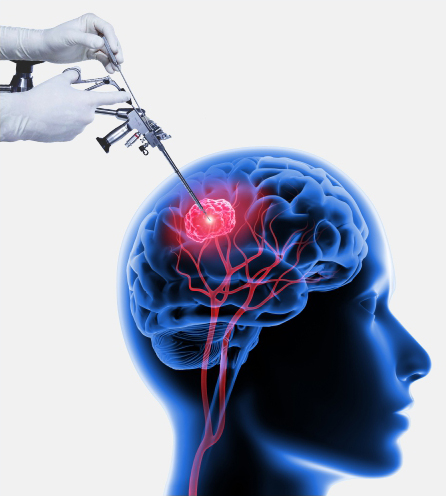
The safest hands for
Brain and Spine
At Bhrungi, our multidisciplinary neurosurgery team is equipped with the latest technologies to treat a wide range of conditions that affect the brain and the spine, including tumours and lesions. Our top-ranked neurosurgeons are available 24×7 to provide immediate care for trauma, accident cases with head and spinal cord injuries and neurological emergencies.
To offer patients the best neuro services, our specialists are part of a multidisciplinary group of experts from different specialties, which enables them to provide comprehensive care. The team may include doctors skilled in interventional neurology, general surgery, anaesthesia, orthopaedic surgery, brain and nervous system imaging and pain medicine.
We, at Bhrungi, believe in an approach that ensures the right care for the patient at the very first time itself in terms of diagnosis, therapies and outcomes for brain, spine and nervous system disorders. In order to successfully accomplish this, accurate diagnosis plays a key role. Our neurologists work closely with radiologists who are trained in the use of innovative and highly advanced imaging technologies, to precisely pinpoint the cause of the signs and symptoms being displayed by the patient. The team then evaluates the results, assessing the problem from all perspectives, before coming up with a comprehensive, tailor-made treatment plan that perfectly meets the patient’s needs.
Aiming to be among the leading brain and spine hospitals in Hyderabad, Bhrungi’s neurosurgeons use advanced techniques and technologies such as image guided planning and intraoperative navigation, to evaluate and treat neurological conditions. Our expert team is adept at providing surgical solutions that serve to restore function, offer pain relief or eliminate the risk of tumours recurring in the brain or spine.
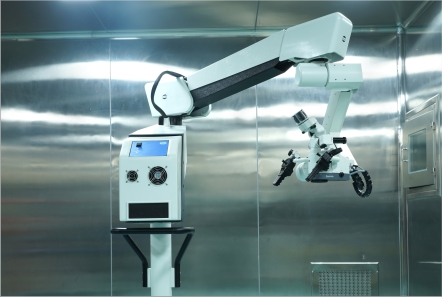
Advanced procedures for the
best neuro treatments
Our neurosurgeons use world class equipment and technologies to access even the deepest recesses of the brain, skull base, or spinal cord to treat diseases and disorders while ensuring the fragile parts are not damaged or affected in any way.
Open brain surgery
Also known as craniotomy, the procedure involves a cut to be made in the scalp bone to expose the brain tissue, and the surgery is performed through this opening. It may be recommended by the neurosurgeon in one of the following conditions: removal of brain tumors, relieving cranial pressure, treating traumatic brain injury, or correcting malformations of blood vessels.
Benefits of minimally invasive surgeries
- Shorter procedure
- Minimal complications
- Shorter hospital stay
- Faster recovery
- Less Pain
- Minimal scarring
- Minimum damage to neighbouring tissues
Deep Brain Stimulation
Deep Brain Stimulation involves implanting of electrodes within the deep structures of the brain, which sends electrical impulses to stimulate nervous signals that are missing in the patient. This type of surgery is used to treat movement and neurodegenerative disorders like Parkinson’s disease, tremors and epilepsy.
Minimally Invasive Surgeries
- Endoscopic Brain and Spine Surgeries
- Microscopic Brain & Spine Surgeries
Endoscopic Brain and Spine Surgery is a minimally-invasive surgical procedure that utilizes an endoscope, which is a small, flexible, lighted tube fitted with a camera. Inserted through small incisions to visualise various parts of the brain, skull base, or spinal cord, the endoscope works as a microscope to send back magnified images for the surgeon to get an in-depth view of the diseased areas requiring repair, removal, or replacement.
Microscopic Brain & Spine Surgery or micro neurosurgery refers to the performance of a complex procedure that utilizes a sophisticated neuro microscope and special micro-instruments to treat diseases of the brain, spine, and spinal cord. The magnification and clarity provided by the microscope enables the surgeon to operate with greater precision ensuring minimal damage to normal brain or spinal cord tissue in the vicinity of the area of abnormality.
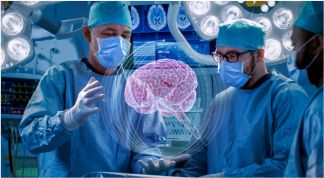
General Neurosurgery
General neurosurgery covers a large number of procedures, including traditional open surgeries to remove brain tumors, relieve cranial pressure, treat traumatic brain injury, or correct malformations of blood vessels.
Minimally Invasive Spine Surgery (MISS)
MISS procedures can be used to treat many types of spinal conditions, including degenerative or herniated disc disorders, lumbar (lower back) spinal stenosis, curvature of the spine, spinal infections, instability of the spine, and compression fractures of the spine, such as those caused by osteoporosis (thinning of the bones). Neuro endoscopic surgeries are used for removal of brain tumours, third ventriculostomy in treatment of hydrocephalus, drainage of brain abscesses & cysts.
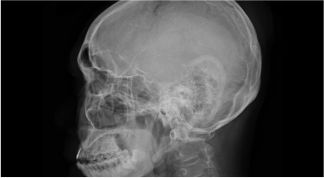
Skull-base tumors can be addressed through traditional open procedures or through minimally invasive techniques. Skull-base surgeries can be used to treat many types of neurological problems – from the removal of pituitary tumors to the treatment of facial pain resulting from cranial nerve compression (trigeminal neuralgia).

Complex spine procedures often require open surgeries to allow access to sensitive areas such as the cervical (neck) spine. However, when the vertebrae are easily accessible, as in the lower back (lumbar) area, minimally invasive procedures are increasingly used to treat more complicated disorders.
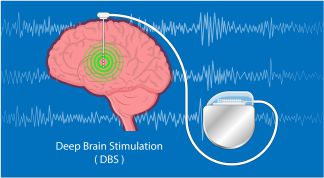
Deep Brain Stimulation uses an electrical device, implanted within the deep structures of the brain, to treat movement disorders such as Parkinson’s disease and dystonia, intractable pain, and mood disorders. The implanted device sends low-level electrical signals which are thought to interrupt nerve communications that underlie these disorders.
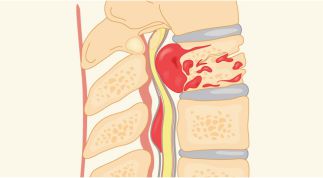
Spinal tumors may be cancerous or non-cancerous. Benign tumors may be treated with a watch-and-wait approach, various medications, radiation, or surgery, while cancerous tumors can be treated with radiation or chemotherapy. But if these fail, surgery is used to relieve pain, stabilize the spine, and improve quality of life.

Epilepsy, or seizure disorder, can be caused by brain injury, tumors, or inborn defects of the brain which cause abnormal electrical activity. If drugs prove insufficient, it can be treated with open neurosurgery, radiosurgery, or minimally invasive procedures.

Our team specializes in both surgical & neuro interventional procedures, including surgical clipping & coiling of aneurysm, surgery of embolization for cerebral study, stroke management, carotid endasterectomy and stenting. The team is well-supported by state-of-the-art Radiology Services.

Skull-base tumors can be addressed through traditional open procedures or through minimally invasive techniques. Skull-base surgeries can be used to treat many types of neurological problems – from the removal of pituitary tumors to the treatment of facial pain resulting from cranial nerve compression (trigeminal neuralgia).

Complex spine procedures often require open surgeries to allow access to sensitive areas such as the cervical (neck) spine. However, when the vertebrae are easily accessible, as in the lower back (lumbar) area, minimally invasive procedures are increasingly used to treat more complicated disorders.

Spinal tumors may be cancerous or non-cancerous. Benign tumors may be treated with a watch-and-wait approach, various medications, radiation, or surgery, while cancerous tumors can be treated with radiation or chemotherapy. But if these fail, surgery is used to relieve pain, stabilize the spine, and improve quality of life.

Deep Brain Stimulation uses an electrical device, implanted within the deep structures of the brain, to treat movement disorders such as Parkinson’s disease and dystonia, intractable pain, and mood disorders. The implanted device sends low-level electrical signals which are thought to interrupt nerve communications that underlie these disorders.

Epilepsy, or seizure disorder, can be caused by brain injury, tumors, or inborn defects of the brain which cause abnormal electrical activity. If drugs prove insufficient, it can be treated with open neurosurgery, radiosurgery, or minimally invasive procedures.

Our team specializes in both surgical & neuro interventional procedures, including surgical clipping & coiling of aneurysm, surgery of embolization for cerebral study, stroke management, carotid endasterectomy and stenting. The team is well-supported by state-of-the-art Radiology Services.
Finest treatment for neuro diseases & disorders
Brain Stroke
Also referred to as a “brain attack,” it is a medical emergency caused by either too little or too much blood flowing to the brain. It needs to be treated immediately.
Brain Trauma
A major accident or fall or violent attack may result in head injury and brain damage. The damage can be focal (confined to one area) or diffused (occuring in more than one area of the brain).
Movement Disorders
These are neurological conditions that cause abnormal increased movements or slow movements. Common disorders include ataxia, dystonia, Parkinson’s disease and tremor.
Vascular Malformations
Rare abnormalities of blood vessels in the brain or spinal cord, these include Arterio Venous Malformation (AVM) which is an abnormal tangling of blood vessels connecting arteries and veins. It may cause seizures, bleeding, paralysis.
Pathological Spine Injuries
Due to constant wear and tear, the spine experiences degeneration over time. The spine conditions include degenerative disc disease, spinal stenosis, spinal arthritis, myelopathy, herniation of spinal discs and fractured vertebrae.
Spinal Cord Tumours
A spinal cord tumour may form inside the spinal cord itself (intradural tumour) or around the bones that make up the spine (vertebral tumour). Spinal tumours can cause pain, neurological problems, paralysis, permanent disability or can even be life-threatening.
Brain Tumours
A mass or growth of abnormal cells in the brain, it can be benign (non-cancerous) or malignant (cancerous). Treatment depends on the type of tumor as well as its size and location.
Cerebral Aneurysm
An abnormal ballooning in the wall of a blood vessel supplying blood to the brain, an aneurysm can burst, causing internal bleeding and could even prove fatal. Treatments include Clipping, Coiling or Wrapping.
Hydrocephalus
It is a condition caused by an abnormal accumulation of cerebrospinal fluid (CSF) within the ventricles of the brain, which leads to swelling and increased pressure on the brain. It can damage brain tissues and impair functions of the brain.
Traumatic Spine Injuries
These are traumatic injuries that bruise, partially or completely tear the spinal cord, and are usually caused by falls, motor accidents, sports injuries or an abscess on the spinal cord.
Spine Infections
Caused by bacterial or fungal infection in another part of the body that has been carried into the spine through the bloodstream, these include vertebral osteomyelitis, intervertebral disc space infections, and epidural abscess.
Spinal Cord Compression
Spinal cord compression is caused by any condition that puts pressure on the spinal cord and can occur anywhere from neck (cervical spine) down to the lower back (lumbar spine). It causes numbness, pain, or weakness of the limbs.
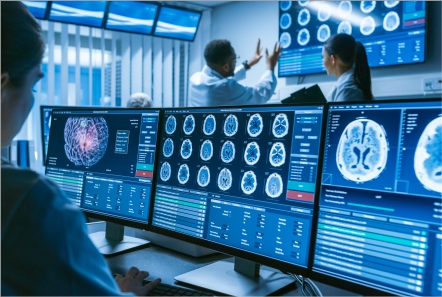
State-of-the-art neurosurgical infrastructure
- Sophisticated neuro-diagnostic and imaging facilities
- 24-hour availability of Neurologists for round-the-clock patient care
- Modular neurosurgery operation theatre with integrated work station and laminar flow
- Neuro microscope
- Neuro drill machine
- Neuro navigation
- Neuro endoscope (CUSA)
- Stroke Unit
- Neuro-Cath Lab








